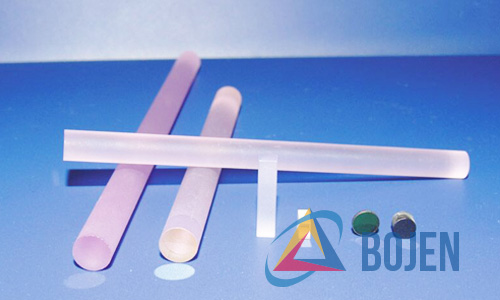| Dopant Concentration: | 0.1 -1.3at% |
| Orientation: | [111] or [100] within 5° |
| Diameter: | 2~15 mm |
| Length: | 3~200 mm |
| Scratch & Dig: | 10/5 |
| Flatness: | λ/10 |
| parallelism: | 10 arc Sec |
| Coating: | AR/AR@1064nm,R<0.25% |
A Nd:YAG Laser Crystal l(neodymium-doped yttrium aluminium garnet; Nd:Y3Al5O12) is used as a lasing medium for solid-state lasers. The dopant typically is around 1%.
Nd:YAG laser crystals are optically pumped using a flashlamp or laser diodes. They are one of the most common types of laser, and are used for many different applications.
Nd:YAG lasers typically emit light with a wavelength of 1064 nm, in the infrared. However, there are also transitions near 940, 1120, 1320, and 1440 nm. Nd:YAG lasers operate in both pulsed and continuous mode.
Nd:YAG absorbs mostly in the bands between 730-760 nm and 790-820 nm. At low current densities krypton flashlamps have higher output in those bands than do the more common xenon lamps, which produce more light at around 900 nm. The former are therefore more efficient for pumping Nd:YAG lasers.
The amount of the neodymium dopant in the material varies according to its use. For continuous wave output, the doping is significantly lower than for pulsed lasers. The lightly doped CW rods can be optically distinguished by being less colored, almost white, while higher-doped rods are pink-purplish.


